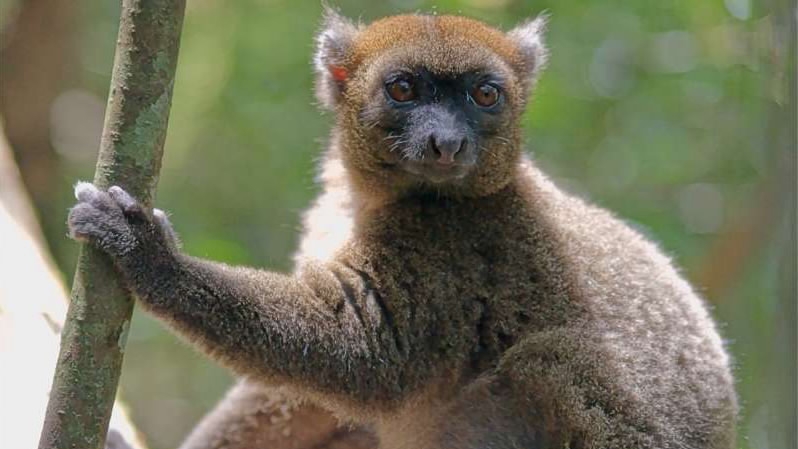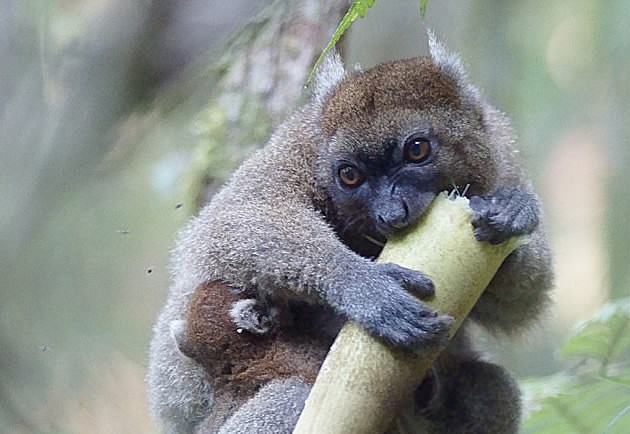
Animal
20:46, 30-Oct-2017
Climate change threatens survival of endangered bamboo lemurs: research
CGTN

Due to climate changes, bamboo lemurs, one of the most endangered primate species on Earth, will gradually be forced to change their dietary habit by eating culm for longer periods, warned a group of researchers from Stony Brook University, the Academy of Finland, Marie Curie Actions of the European Union and the Kone Foundation.
What’s worse, it could ultimately lead to the destruction of bamboo lemurs.
"For extreme feeding specialists like the greater bamboo lemur, climate change can be a stealthy killer," said Patricia Wright, one of the authors. "Making the lemurs rely on a suboptimal part of their food for just a bit longer may be enough to tip the balance from existence to extinction."

Bamboo lemur is a small cat-sized primates living on the island of Madagascar and is considered to be one of the most endangered apes on earth./Phys.org Photo
Bamboo lemur is a small cat-sized primates living on the island of Madagascar and is considered to be one of the most endangered apes on earth./Phys.org Photo
According to the International Union for Conservation of Nature (IUCN), there are only about 500 greater bamboo lemurs remain, scattered across a thinning stretch of bamboo forest.
The study particularly mentioned Madagascar's cat-sized greater bamboo lemurs that almost exclusively eat a single species of bamboo, including the woody trunk, known as culm. Greater bamboo lemurs prefer the more nutritious and tender bamboo shoots and use their specialized teeth to gnaw on culm only when necessary, during the dry season.
Researchers first showed that the greater bamboo lemurs are equipped with highly complex and specialized teeth, just like giant pandas, the only other mammal capable of feeding on culm. These teeth make it possible for them to consume and survive on woody culm for parts of the year.
To find out more about the greater bamboo lemurs' feeding habits, the researchers spent hours watching them in their natural habitat in Madagascar's Ranomafana National Park over a period of 18 months.

An infant./ Phys.org Photo
An infant./ Phys.org Photo
They collected more than 2,000 feeding observations in total. Those data showed that the lemurs spend 95 percent of their feeding time eating a single species of woody bamboo. But they only eat the culm from August to November, when dry conditions make tender shoots unavailable.
Analyzing the greater bamboo lemur's current distribution on the island compared to the past, as inferred from fossils, the researchers found out that a short dry season has been crucial to the survival of greater bamboo lemurs.
However, climate models suggest that the areas where the lemurs currently are found are likely to experience longer and longer dry seasons in the future.
Besides, the findings may have implications for understanding the fate of bamboo-feeding giant pandas, too, the researchers say.
Source(s): Xinhua News Agency

SITEMAP
Copyright © 2018 CGTN. Beijing ICP prepared NO.16065310-3
Copyright © 2018 CGTN. Beijing ICP prepared NO.16065310-3